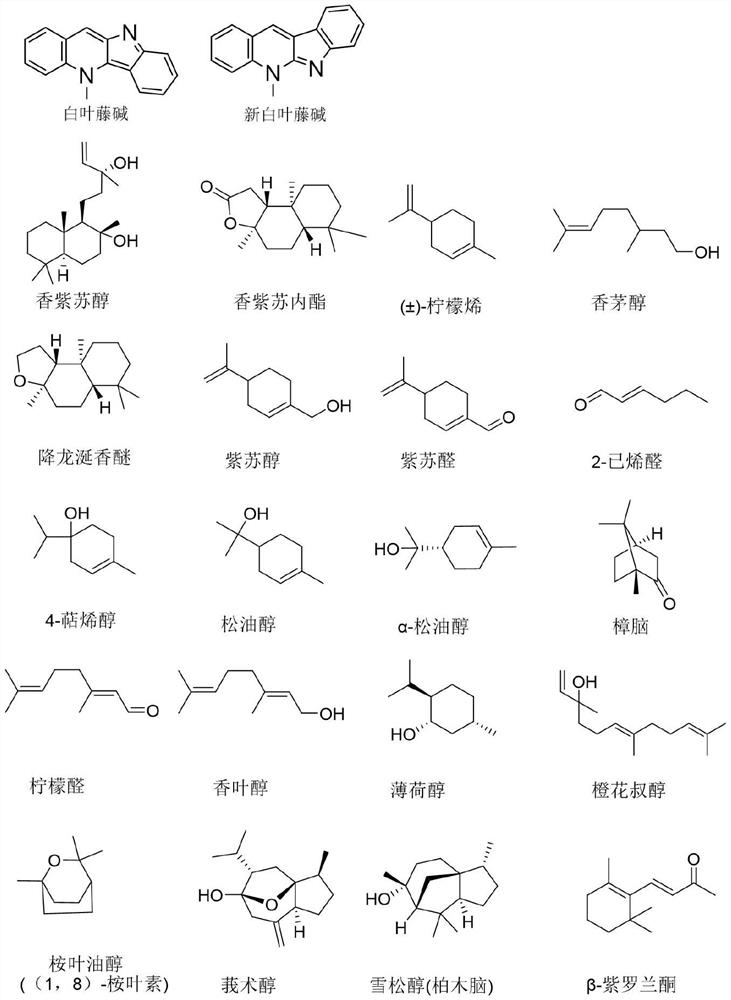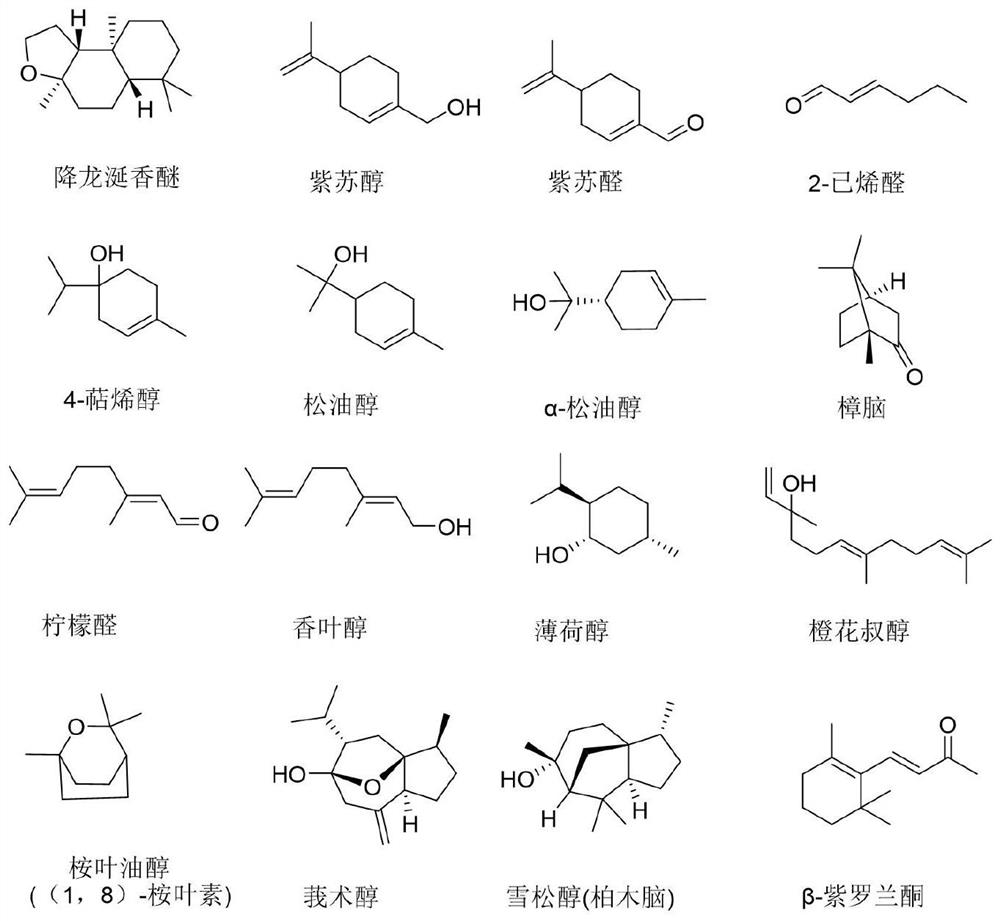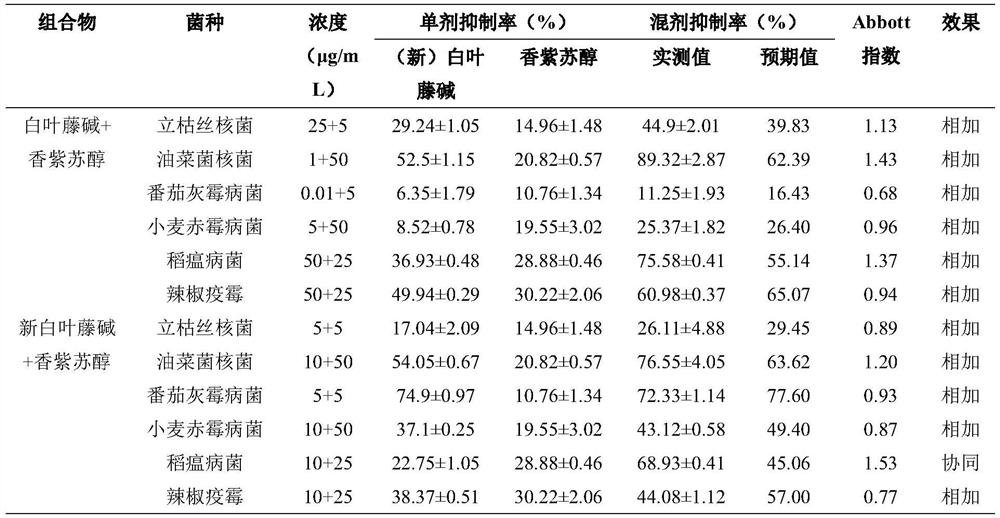Application of composition containing cryptolepine analogue and small molecule terpene compound in prevention and treatment of plant diseases
A technology of selemenine and molecular terpenes, applied in the field of natural medicinal chemistry, can solve the problems of decreased resistance of pathogens, drug-resistant pathogens, etc., and achieve the effects of improving bactericidal activity, prolonging service life, and overcoming disease resistance.
- Summary
- Abstract
- Description
- Claims
- Application Information
AI Technical Summary
Problems solved by technology
Method used
Image
Examples
Embodiment 1
[0013] Embodiment 1: A kind of fungicide composition containing basaltine or basaltine and small molecule terpene compounds, including active component A and active component B, the active component A is white leaf Phinerine or elepine, the active component B is a small molecular terpene compound.
[0014] active ingredient A
[0015] active ingredient B
[0016]
Embodiment 2
[0017] Embodiment 2: Determination of the indoor activity of basaltine or basaltine and sclareol combination on plant diseases
[0018] The phytopathogenic bacteria used in this experiment were strains stored at 4°C in the laboratory, and the medium used was potato agar dextrose medium (abbreviated as PDA). PDA medium formula: potato (peeled) 200g, glucose 20g, agar 15g, distilled water 1000mL, natural pH.
[0019] Test method: Wash and peel the potatoes, weigh 200g, cut into small pieces, add water and boil until rotten (boil for 20-30 minutes, it can be pierced by a glass rod), filter with four layers of gauze, and fill the beaker with water to 1000mL. According to the needs of the experiment, add 15-20g of agar, add 20g of glucose, stir to make it fully dissolved, then pack them into Erlenmeyer flasks, sterilize at 121°C for 20 minutes, and set aside. Dissolve the single-dose compounds eleganine, elederine, and sclareol in DMSO respectively, add them into the culture mediu...
Embodiment 3
[0031] Example 3: Determination of the indoor activity of basaltine or the combination of basaltine and sclareolide to plant diseases
[0032] The test method is the same as in Example 2, only sclareolide is used instead of sclareol.
[0033] Table 3 Indoor bacteriostatic activity of basaltine or the combination of basaltine and sclareol against plant diseases
[0034]
[0035] From the results of the activity test in Table 3, it can be known that the combination of basaltine or basaltine and sclareolide at a certain concentration is effective against Rhizoctonia solani, Sclerotinia rape, Botrytis cinerea, Wheat head blight, Oryza sativa Plant diseases such as Pestidis and Phytophthora capsici exhibit additive effects.
PUM
 Login to View More
Login to View More Abstract
Description
Claims
Application Information
 Login to View More
Login to View More - R&D
- Intellectual Property
- Life Sciences
- Materials
- Tech Scout
- Unparalleled Data Quality
- Higher Quality Content
- 60% Fewer Hallucinations
Browse by: Latest US Patents, China's latest patents, Technical Efficacy Thesaurus, Application Domain, Technology Topic, Popular Technical Reports.
© 2025 PatSnap. All rights reserved.Legal|Privacy policy|Modern Slavery Act Transparency Statement|Sitemap|About US| Contact US: help@patsnap.com



